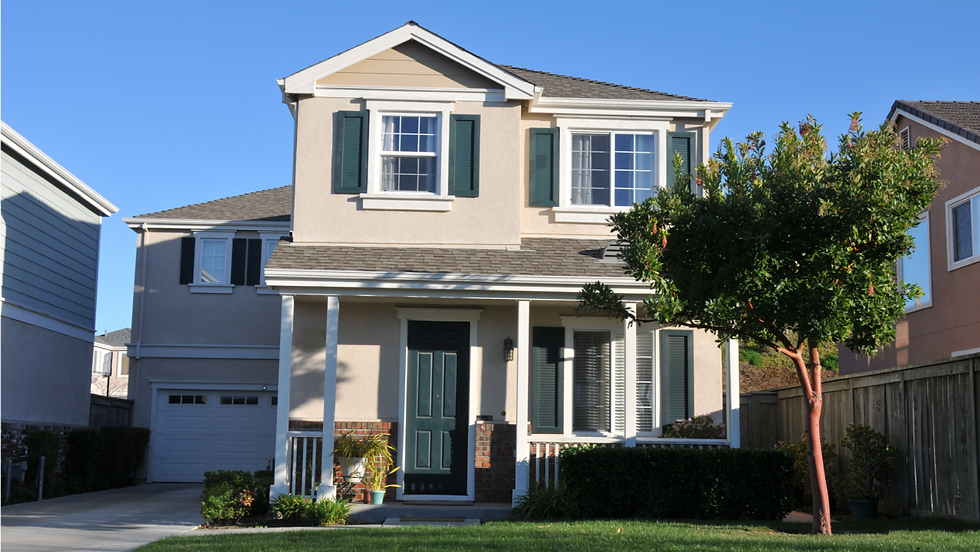How Florida’s Population Boom Is Reshaping the Rental Market
- Maria V.
- Sep 10, 2025
- 6 min read
Florida’s dramatic population growth over the past several years is profoundly altering the state's rental housing landscape. From soaring rents and diverging rental formats to affordability crises and changes in supply dynamics, the boom presents an array of challenges and opportunities.

Rapid Population Influx Meets Supply Shortage
Florida has experienced a remarkable demographic shift in recent years, fueled largely by domestic migration from high-cost states such as New York, Illinois, and California. Between 2019 and 2023, the state welcomed roughly 1 million new households, including nearly 195,000 renters. This rapid influx has placed unprecedented pressure on Florida’s housing market.
Developers have scrambled to keep up, delivering more than 240,000 new multifamily units over the same period. Yet, the pace of construction has lagged behind demand. The imbalance between population growth and housing supply has produced one of the most strained rental markets in the nation.
As a result, median rent for multifamily units skyrocketed by 39% within just four years, climbing from $1,238 in 2019 to $1,719 in 2023. For many Floridians, particularly new renters and lower- to middle-income households, the rental squeeze has created financial stress and limited affordable options.
The state’s experience highlights a broader national trend: when population growth surges without a proportional increase in housing supply, affordability challenges intensify. Florida’s challenge moving forward will be how to sustain growth while ensuring that housing remains accessible across income levels.

Affordable Rentals Vanish as Luxury Supply Grows
Florida’s rental landscape has undergone a dramatic transformation over the past decade, marked by the disappearance of affordable housing options. A study by Harvard’s Joint Center on Housing Studies found that, when adjusted for inflation, the number of rental units priced below $1,000 per month has plummeted by nearly 60% statewide. This staggering decline underscores how quickly low-cost housing has vanished from the market.
One major driver of this shift is the surge in luxury multifamily developments. Developers, responding to demand from wealthier newcomers and investors, have prioritized high-end projects over affordable units. While these luxury properties often come with premium rents, they play a complicated role in the market. By absorbing a portion of high-income renters who might otherwise compete for mid-priced apartments, luxury developments can indirectly reduce pressure on lower-tier units.
Still, the effect remains limited. With fewer affordable rentals available, many working-class and lower-income Floridians face mounting financial strain. The mismatch between supply and demand continues to fuel affordability challenges, highlighting the urgent need for policies and investments that expand housing options at all income levels.

Surge in Built-to-Rent and Single-Family Rental Models
Florida’s housing market is undergoing a notable shift as built-to-rent (BTR) communities and single-family rental (SFR) models rise in prominence. Nowhere is this trend more evident than in the Tampa–St. Pete–Clearwater area, where BTR supply has more than doubled over the past five years. This growth reflects changing consumer preferences and a market increasingly open to alternatives beyond traditional multifamily apartments.
Demand for suburban rental housing has been bolstered by key demographic shifts. Retirees seeking low-maintenance living, remote workers prioritizing space and flexibility, and young families looking for affordable options outside city centers are driving interest in single-family rental properties. These groups see BTR communities as a way to access the benefits of home life—yards, privacy, and space—without the financial barriers of ownership.
Institutional investors have taken notice, pouring capital into BTR and SFR developments across Florida. Yet, challenges are emerging. Rising acquisition costs, high interest rates, and elevated insurance premiums are reshaping investment strategies, forcing developers and investors to recalibrate expectations. While the sector continues to expand, financial pressures could slow its pace of growth in the coming years.
Overall, Florida’s surge in built-to-rent housing underscores both opportunity and tension: a rapidly growing market segment meeting evolving housing needs, but one navigating significant headwinds in the process.
Regional Variation: New Developments and Pressures
Florida’s rental market is not uniform—regional dynamics highlight how local factors are shaping both opportunities and challenges.
In Boca Raton, a surge of new development is transforming the city’s rental landscape. Roughly 7,600 new rental units are in the pipeline, led by major developers eager to capture demand from the influx of migrants and businesses relocating to Palm Beach County. The construction boom underscores how South Florida’s appeal to high-income households and corporate relocations continues to fuel demand, even as affordability concerns intensify.
By contrast, Cape Coral is facing a different set of pressures. The area’s homeownership market has slowed, raising the possibility that more households will shift into rentals. Yet, conditions are complicated: oversupply in some parts of the market and tight credit access make it difficult to predict whether Cape Coral’s rental demand will stabilize or intensify further.
These variations reveal a broader truth about Florida’s housing market: while population growth is a statewide driver, local economies, development pipelines, and financial conditions create sharply different rental realities across regions.

Long-Term Trajectory: Growth, Constraints, and Market Rebalancing
Florida’s rental market shows no sign of slowing as the state continues to dominate national migration trends. Between 2020 and 2024, Florida added nearly 1.8 million new residents, averaging 350,000–375,000 newcomers each year. This influx—driven by retirees, remote workers, and households relocating from higher-cost states—has translated into sustained, robust demand for rental housing.
Future projections remain bullish on Florida’s growth trajectory, but supply-side challenges loom large. Zoning restrictions, elevated building costs, and labor shortages are constraining the pace of new construction. Even with significant development pipelines in cities like Miami and Tampa, these structural barriers make it difficult for housing supply to keep up with demand.
Some analysts suggest that the surge of multifamily construction currently underway may create a temporary rebalancing effect. New deliveries could push up vacancy rates in select markets, offering renters a brief reprieve from steep price pressures. However, without longer-term solutions to address affordability and supply bottlenecks, the relief may be short-lived.
Ultimately, Florida’s long-term housing outlook hinges on its ability to balance rapid population growth with sustainable development strategies. Whether through zoning reform, incentives for affordable housing, or infrastructure investment, the state’s response will determine if its rental market can stabilize or remain in a cycle of high demand and rising costs.
Summary Table
Aspect | Impact on Rental Market |
Population Boom | ~1M new households since 2019 → 39% rent increase |
Affordable Housing Shortage | 60% drop in <$1,000/month rentals over past decade |
Built-to-Rent/SFR Development | Surging institutional interest; BTR supply doubles in Tampa region |
Regional Growth & Supply Variation | Major development projects in Boca; mixed signals in markets like Cape Coral |
Development vs Affordability | Supply growth easing pressure in some areas; systemic affordability issues remain |
Florida’s Rental Market: Growth Meets Affordability Challenges
Florida’s rental market is undergoing a fundamental transformation as population growth collides with limited affordable housing supply. The state has been one of the nation’s top migration destinations in recent years, drawing hundreds of thousands of new residents annually from both within the U.S. and abroad. This strong inflow has kept rental demand elevated across nearly every major metro.
New development has surged to meet the challenge, with multifamily projects and built-to-rent single-family communities becoming central to the state’s housing response. While these additions provide some relief, the bulk of new supply has been concentrated in the high-end segment. Luxury apartments and master-planned rental communities cater to wealthier households and corporate relocations, leaving lower-income renters increasingly marginalized as affordable units vanish.
Regional dynamics further complicate the picture. South Florida metros such as Miami, Fort Lauderdale, and Boca Raton continue to attract both migrants and developers, sustaining intense competition for rentals. In contrast, markets like Cape Coral face different pressures, including weakened homeownership demand and credit constraints that may shift more households into rentals. Meanwhile, Tampa and Orlando are seeing rising investment in built-to-rent models, reflecting demand from families and remote workers seeking suburban lifestyles.
Ultimately, Florida’s rental market illustrates the tension between growth and accessibility. While development pipelines are robust, the concentration of high-end supply alongside persistent affordability challenges raises questions about long-term sustainability. Without broader efforts to expand affordable options, the state risks deepening its housing divide even as it thrives as a migration magnet.
Sources:
news.ufl.edu, Florida Phoenix, shimberg.ufl.edu
Axios
Axios, Atlas Real Estate, HousingWire
New York Post, Wall Street Journal
New York Post, North American Community Hub, Hampton Real Estate Advisors, LLC
Florida’s rent rose 39% from 2019 to 2023 amid 1 million new households entering the state Florida Phoenixnews.ufl.edu.
Median multifamily rent increased from $1,238 to $1,719 monthly shimberg.ufl.eduFlorida Phoenix.
Nearly 195,000 new renter households added between 2019 and 2023 news.ufl.edu.
Affordable rentals (<$1,000/month) down ~60% over the last decade Axios.
BTR supply doubled in Tampa metro; Florida one of top markets Axios.
Migrants include remote workers, retirees, young families driving rental demand across formats Atlas Real EstateHousingWire.
Boca Raton adding 7,600 rental units amid migration and business relocation New York Post.
Cape Coral: housing downturn may further tilt renters’ demand, but signals complex Wall Street Journal.
Florida's population growth remains among the highest in the US, with ~1.8M new residents from 2020–2024 New York PostNorth American Community Hub.
New construction in Miami, Tampa affecting vacancy and rent pressures Hampton Real Estate Advisors, LLC..
news.ufl.edu, Florida Phoenix, Axios, HousingWire, New York Post, Wall Street Journal, Hampton Real Estate Advisors, LLC



Comments